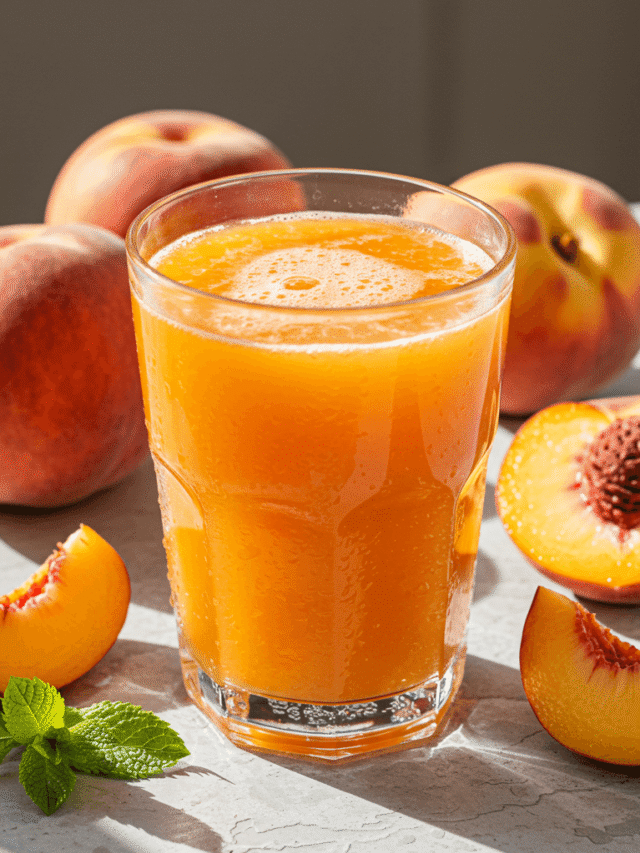,Imagine you’re in the kitchen, wanting a refreshing drink but afraid of sugar spikes. What if you could make a vibrant juice that’s tasty and healthy? fresh juice recipes for diabetics let you nourish your body without losing flavor. This guide simplifies the process into five easy steps, helping you make juices that fit your diet.
Living with diabetes doesn’t mean you have to give up on taste. With the right mix of nutrients and low glycemic ingredients, you can make juices that keep your blood sugar stable. This article will guide you on picking ingredients, preparing, and enjoying juices that match your lifestyle. It shows that healthy and tasty can go hand in hand.

Key Takeaways
- Learn five actionable steps to design diabetic-friendly juice recipes.
- Discover how fresh juice recipes for diabetics can support blood sugar management.
- Understand ingredient choices that balance nutrition and flavor.
- Get tips for easy preparation and consistency in every batch.
- Explore options to stay creative with low-sugar juice variations.
Understanding Fresh Juice Recipes for Diabetics
Creating healthy juice recipes for diabetes means balancing nutrition and blood sugar. These drinks help keep glucose levels stable while providing essential vitamins and minerals. Here’s how to find a diabetic-friendly option.
What Makes a Juice Diabetic-Friendly?
Key factors include:
- Low glycemic index ingredients to prevent spikes.
- Fiber-rich produce to slow sugar absorption.
- Portion control to avoid excessive natural sugars.
Key Ingredients to Look For
Choose vegetables like spinach, cucumber, and celery. Berries and lemon add flavor without high sugar. For diabetic smoothie recipes, blend leafy greens with protein powder for balance. Avoid tropical fruits like mango or pineapple.
Aim for a mix of non-starchy veggies and low-sugar fruits. Small portions keep carbs in check.
Always check nutrition labels for added sugars. Prioritize whole foods over concentrated juices. This ensures your drinks meet diabetic dietary needs.
Benefits of Incorporating Fresh Juice into Your Diabetes Diet
Adding fresh juices to your daily routine can change how you manage your health. Low-sugar juice recipes give you vitamins, minerals, and fiber without raising your blood sugar. These drinks boost your body’s nutrients.
- Nutrient Powerhouse: Vegetables like leafy greens and celery offer fiber and antioxidants without added sugars.
- Hydration & Balance: Drinking these juices keeps you hydrated, boosts energy, and supports your metabolism.
- Customizable Options: You can pick from countless low-sugar juice recipes to match your diet and taste.
These juices also cut down on processed drinks with artificial sweeteners. For example, mixing spinach, cucumber, and a bit of lemon makes a tasty, diabetic-friendly drink. Many people feel more energetic and see better blood sugar control after drinking these juices.
“Properly planned juices can be a cornerstone of diabetes management when paired with balanced meals.” — American Diabetes Association
Begin with one serving a day and watch how your body reacts. Pair low-sugar juice recipes with regular health check-ups to make sure they’re right for you. Over time, these small changes can become a lasting part of your health journey.
Selecting the Right Ingredients for a Healthy Juice Lifestyle
Choosing the right ingredients is key for fruit juice recipes for diabetics. They should taste great and be good for you. Look for foods that keep blood sugar stable and add flavor without extra sugar.
Nutrient-Dense Fruits and Vegetables
Choose low-glycemic, fiber-rich foods:
- Leafy greens like spinach and kale are full of vitamins and don’t raise sugar levels.
- Cucumber is hydrating and has electrolytes, with very few carbs.
- Non-starchy veggies like celery and zucchini balance out sweetness.
- Low-sugar berries (strawberries, raspberries) are packed with antioxidants.
Herbs and Spices for Extra Flavor
Add flavor without sugar with:
- Ginger for a zesty kick.
- Turmeric with black pepper for anti-inflammatory effects.
- Mint or basil to add freshness to bland flavors.
- Lemongrass for citrusy notes without sugar.
Mixing these ingredients makes fruit juice recipes for diabetics that are tasty and healthy. Always check the glycemic index and portion sizes to keep blood sugar in check.
5 Easy Steps to Prepare Your Fresh Juice Recipes
Learning natural juice recipes for diabetes is simple. Just follow these steps to make healthy drinks every time:
- Organize Ingredients and Tools: Get fresh produce and a fast juicer like the Breville JE984XL. Wash and chop veggies and fruits before juicing.
- Layer for Efficiency: Juice tough items first (like celery and spinach) then softer ones (like berries and cucumber) to avoid blockages.
- Mix Immediately
- Clean as You Go: Clean parts right after use to stop buildup.
Step-by-Step Preparation
Always use a food scale to measure ingredients for balanced sugar levels. Use apps like MyFitnessPal to keep track of what you eat.
Tips for Consistency in Every Batch
- Freeze leftover greens in ice cube trays for future batches.
- Use a glycemic index chart to balance high and low-sugar ingredients.
“Consistency ensures blood sugar stability—key for diabetic diets,” says Dr. Linda Carter, a registered dietitian specializing in diabetic nutrition.
Slowly change recipes to fit your taste while keeping health first. Choose organic produce for the best nutrients.
Mastering Diabetic-Friendly Juice Mixing Techniques
Learning the right techniques makes your juices both healthy and tasty. Start with low-sugar veggies like cucumber or spinach as your base. These ingredients balance sweetness and add vitamins without raising blood sugar.
- Layer ingredients strategically: Put denser greens first, then softer fruits like apple or pear. This order prevents clogs and ensures even extraction.
- Use citrus juices (lemon or lime) to brighten flavors without added sugar. A few drops can make earthy greens like kale taste better.
- Try herbs like mint or cilantro for fresh notes. They help reduce the need for sugary additives.
“The key is texture and timing—pulse the motor briefly to preserve enzymes, then blend fully for a smooth consistency,” says registered dietitian Laura Green of the American Diabetes Association.
Get a high-speed blender like the Vitamix 5200 to efficiently break down fibrous veggies. Always clean your equipment right away to keep nutrients fresh. These methods turn juicing into a science that supports your health goals without losing flavor.
How to Balance Flavors for Low-Sugar Juice Recipes
Making low-sugar juice that tastes amazing doesn’t need added sugars. Follow these tips to create delicious, diabetes-friendly recipes.
Reducing Sugar Naturally
Begin by mixing sweet ingredients with bitter or tart ones:
- Leafy greens like spinach or kale add bitterness that cuts sweetness.
- Cucumber or celery balance flavors with crispness.
- Lemon or lime juice brightens taste without sugar.
Using Natural Sweeteners
Opt for options that won’t raise blood sugar levels:
- Stevia: Zero-calorie and 200–300x sweeter than sugar.
- Monk fruit extract: Natural and low glycemic index.
- Small amounts of apple or pear: Add subtle sweetness without overloading.
Try small batches first. Adjust ratios gradually to find your perfect taste.
Exploring Diabetic Smoothie and Juice Variations
Try new diabetic-friendly drinks that are tasty and low in sugar. Here are some juice and smoothie variations to spice up your day:
- Green Blend: Mix spinach, cucumber, and celery for a refreshing drink.
- Tropical Twist: Blend unsweetened coconut water with a bit of pineapple for a sweet touch.
- Smoothie Boost: Add avocado and almond milk to juices for creaminess and healthy fats.
Pair veggies like kale with berries for a balanced drink. Add cinnamon or turmeric for warmth without sugar. Use apps like MyFitnessPal to track carbs.
“Small changes make big differences. Try one new recipe weekly to stay motivated.” – American Diabetes Association
Blend veggies with protein like Greek yogurt powder to slow down sugar release. For example, spinach + cucumber + 1 tbsp peanut butter makes a filling drink. But, limit tropical fruits to keep carbs in check.
- Start with vegetable bases (kale, zucchini) as 70% of your recipe.
- Add 1-2 low-sugar fruits (strawberries, lemon).
- Include fats like chia seeds or flaxseed for lasting energy.
Try herbs like basil or mint to add a fresh twist. Always check with your dietitian before trying new ingredients.
Creating a Weekly Plan for Diabetic Juice Cleanses
Effective diabetic juice cleanse recipes need a plan, not just ingredients. Start by matching your juice schedule with your daily routine. This helps keep your blood sugar stable.
Meal Planning for Blood Sugar Control
Drink juices with small meals to prevent blood sugar spikes. For instance, have a low-sugar green juice mid-morning. This is between breakfast and lunch. Here’s how to do it:
- Choose diabetic juice cleanse recipes that go well with your meals.
- Use a calendar or app to track when you drink juices.
- Adjust how much juice you drink based on how active you are.
Scheduling Your Juice Cleanse
Make sure to drink juices at the same times every week. Try this schedule:
- Monday: Cucumber-kale mix (low glycemic)
- Wednesday: Beet-apple combo (with cinnamon)
- Saturday: Spinach-pineapple blend (moderate sugar)
“Consistency in timing matters most for glycemic stability,” says the American Diabetes Association.
Use pre-portioned ingredients to stay on track. Prepare veggies and fruits for the week to avoid last-minute changes. Remember, always talk to your doctor before starting any cleanse.
Incorporating Seasonal Produce into Diabetic Juice Recipes
Seasonal produce is perfect for diabetic juice recipes. It offers the best flavor and nutrients. Choosing seasonal items makes your drinks fresh, affordable, and full of vitamins.

Benefits of Seasonal Ingredients
Seasonal items have many benefits:
- Fresher nutrients: Fruits and veggies picked at peak ripeness have more vitamins.
- Cost-effective choices: In-season items are often cheaper and widely available.
- Less waste: Seasonal produce lasts longer in storage, reducing spoilage.
Adapting to Seasonal Changes
Keep track of what’s in season to adjust your recipes:
| Season | Produce | Benefits |
|---|---|---|
| Spring | Kale, spinach, asparagus | Wealth of iron and fiber |
| Summer | Strawberries, cucumbers, zucchini | Hydrating and low in sugar |
| Fall | Apples, pumpkin, beets | Fiber-rich and vitamin-packed |
| Winter | Oranges, carrots, Brussels sprouts | Immune-boosting vitamin C and beta-carotene |
Check local farmers’ markets or grocery store guides to find what’s fresh. Swap ingredients seasonally while keeping sugar levels in mind.
Juicing Equipment and Tools for Beginners
Starting your juicing journey? The right juicing equipment makes all the difference. Choose tools that simplify the process and keep your recipes diabetic-friendly. Here’s what to prioritize:
- High-speed blenders: Opt for models like the Vitamix 5200 to blend fibrous veggies smoothly.
- Masticating juicers: Brands like Omega NC900HDS extract nutrients gently without overheating.
- Citrus presses: OXO Good Grips Juicer handles lemons and limes for vitamin C boosts.
- Measuring cups: Track portions to control sugar intake precisely.
- Airtight containers: Store juices in Pyrex glass jars to preserve freshness.
Clean tools immediately after use to prevent mold. Wipe blades and nooks thoroughly. Regular maintenance extends tool lifespan and avoids cross-contamination.
“Sharp blades and clean parts ensure consistent texture and safety.”
Invest in sturdy, easy-to-clean tools. Look for brands with wide-mouth openings for easy cleanup. Avoid plastic parts that harbor bacteria. Prioritize quality over cost to maintain juice integrity. Now you’re ready to start crafting nutrient-packed drinks safely!
Tips to Maintain Nutritional Integrity in Your Juice Recipes
To get the most nutrients from your diabetic-friendly juices, start with smart preparation. Follow these tips to keep vitamins and minerals fresh. Avoid steps that harm their health benefits.
Preserving Vitamins and Minerals
- Use fresh produce within 24 hours of juicing to lock in nutrients.
- Opt for a masticating juicer like the Breville JE98XL to minimize oxidation.
- Store juices in airtight glass containers to slow nutrient loss.
Avoiding Over-Processing
Too much processing can lose important compounds. Try:
- Keep juicing time under 60 seconds per batch.
- Avoid heating juices above room temperature.
- Clean equipment immediately after use to prevent enzyme damage.
| Processing Method | Nutrient Retention |
|---|---|
| Masticating | 92% |
| Centrifugal | 75% |
| Blender Puree | 85% |
Always choose cold-pressed techniques and handle ingredients gently. Small changes can make a big difference. They help keep your recipes safe and full of nutrients for managing blood sugar.
Guidelines for Safe Blood Sugar Monitoring with Juice Recipes
Managing blood sugar is key when making juice recipes for blood sugar control. First, learn how different ingredients affect your levels.
Understanding Glycemic Index
Opt for ingredients with a low glycemic index (GI) to prevent spikes. Foods like spinach, celery, and green apples slow down sugar absorption.
- Leafy greens (kale, spinach) help keep insulin stable.
- Cucumbers add volume without raising levels.
- Vegetable-based blends are safer than fruit-heavy ones.

When to Consult Your Healthcare Provider
Always talk to your doctor about juice recipes for blood sugar control if you:
- Take diabetes medications that can interact with certain nutrients.
- See unexpected changes in glucose readings.
- Have kidney issues or other chronic conditions.
Check your glucose 2 hours after drinking juice to spot trends. Keep a log of ingredients and results to share with your care team.
Creative Twists on Traditional Fruit Juice Recipes for Diabetics
Make your juice routine exciting without losing sight of health goals. Try these creative ideas to turn classic recipes into diabetic-friendly treats:
- Swap apples with green apples: They have less sugar, keeping the taste light and refreshing.
- Add ginger or cucumber: These veggies enhance the flavor in berry or citrus juices, reducing the need for added sugars.
- Blend spinach or kale: Mixing these leafy greens with pineapple or mango adds nutrients without raising blood sugar levels.
“Small ingredient swaps can make big differences in both taste and blood sugar management.”
Try cinnamon or turmeric for a warm, sweet flavor without sugar. A carrot-lemon-ginger mix offers a zesty twist. Always check the sugar content in store-bought juices—choose brands with under 10g sugar per serving. Pairing juices with nuts or seeds can slow down sugar absorption. These changes keep meals fun while supporting your health goals.
Try new juice combinations every week to stay inspired. Mix frozen berries with celery for a thick, icy drink. Remember, variety keeps you motivated to follow your health plan.
Making the Most of Diabetic Juice Cleanse Recipes
Planning a juice cleanse is key to achieving your health goals. Follow these steps to get the most out of it while managing diabetes well.
Planning Your Cleanse
First, pick a realistic time frame. Aim for 1–3 days when you can relax and avoid hard physical work. Plan your meals and juice times to match your blood sugar checks. Use recipes that balance fiber and nutrients. Always check with your doctor before starting.
Overcoming Common Challenges
Many people struggle with hunger or feeling tired. Here are some tips to help:
- Cravings: Drink small amounts of juice every 2–3 hours.
- Lack of energy: Add spinach or kale to boost iron intake.
- Time constraints: Prep ingredients the day before.
| Challenge | Solution |
|---|---|
| Low motivation | Track progress in a journal. |
| Unbalanced nutrition | Incorporate protein-rich veggies like broccoli. |
Stay on track by being consistent. If needed, slowly change recipes. Always check your blood sugar before and after to see how you’re doing.
Conclusion
Making fresh juice recipes for diabetics means picking ingredients with low glycemic index. Follow the five steps to make juices that fit your diabetic diet. They should taste good and be full of nutrients.
Choose leafy greens and non-starchy veggies for their nutrients. They help keep your blood sugar stable. Use natural sweeteners like cucumber or herbs to balance flavors.
Always watch how your body reacts to new juices. Adjust the amounts based on your health goals. Talk to your healthcare team before making big changes.
Start with simple recipes and add them to your diet slowly. With the right tools and knowledge, you can enjoy tasty juices that are good for your health. Making small changes, like drinking homemade juice instead of sugary drinks, can make a big difference over time.
FAQ
Are there specific fruits I should avoid in juice recipes for diabetics?
Yes, avoid fruits like bananas and grapes because they are high in sugar. Instead, choose fruits like berries, green apples, and citrus fruits. They are better for managing blood sugar levels.
What are some healthy juice recipes for diabetes that I can try?
Try refreshing juices like cucumber, spinach, and green apple. Or, try beetroot and carrot juice with a bit of lemon. These are tasty and help control blood sugar.
How can I make my juice recipes for diabetics more flavorful without adding sugar?
Use herbs like mint or basil to add flavor. Spices like ginger or cinnamon also work well. Citrus fruits can add taste and health benefits without extra sugar.
What is the glycemic index, and why is it important for juice recipes?
The glycemic index (GI) shows how quickly foods raise blood sugar. Choose low-GI ingredients for your juices. They release sugar slowly, which is good for diabetes.
Can I use smoothies in place of juices for managing diabetes?
Yes! Smoothies can be a great option. They often have fiber from fruits and veggies, which helps control blood sugar. Plus, they’re packed with nutrients.
How do I create a diabetic-friendly juice cleanse?
For a diabetic-friendly cleanse, use low-sugar fruits and veggies. Add leafy greens and healthy fats like avocado. Always check with a healthcare provider before starting a cleanse.
What are some natural sweeteners I can use in my juice recipes?
Use natural sweeteners like stevia, monk fruit, or a little honey. They add sweetness without raising blood sugar too much. Always watch how they affect your blood sugar.
How often can I include juice in my diet if I have diabetes?
You can have low-sugar juices a few times a week. But, always check your blood sugar and talk to your doctor to find the right amount for you.
What juicing equipment do I need for making fresh juice recipes?
Get a good juicer or blender and measuring tools. A fine mesh strainer or cheesecloth is also useful for smoother juices.
Can I mix vegetable and fruit juices together for a better taste?
Yes, mixing veggies and fruits can make a great taste and boost nutrition. Just pick low-sugar, high-fiber options to keep it diabetes-friendly.
Did you like our recipe?
If you have any questions or inquiries, please contact us in the page of in instagram























